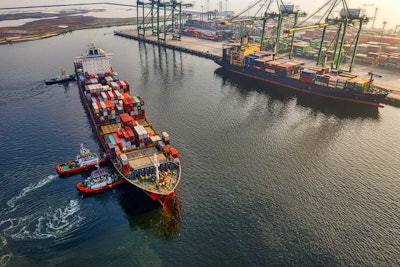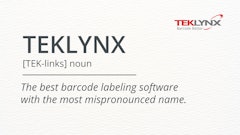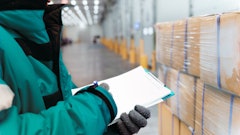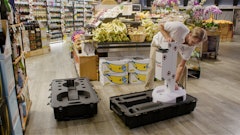
Picture this: a refrigerated (reefer) container full of papayas is lifted onto a vessel at Agadir in Morocco, bound for London Gateway. Mid-voyage, the container’s cooling system begins to drift and malfunction.
When the system starts to fail, an edge AI model flags the anomaly immediately, an operator intervenes within minutes, and the cargo stays within spec. Effectively, AI has averted the threat of the entire cargo being ruined. It means that when the fruit arrives in the UK four days later, it’s as fresh as the day it was picked.
An alternative scenario: what if long before the ship set sail, AI-powered predictive maintenance flags the risk of failure, and the issue is resolved in the yard?
These are no longer hypothetical questions – rather they illustrate how AI is changing the way perishable goods move. From reactive firefighting to proactive protection of time-at-temperature.
Perishable supply chains are the most vulnerable of all. They face a unique set of challenges: keeping food fresh through heatwaves, congestion at ports, fragmented paperwork and rising costs.
Modernization is at the heart of the response to these issues. However, logistics companies must also deploy technology in an intelligent manner.
As you move from AI pilot to production, the technological advances playing out day-to-day are extraordinary and it’s only just beginning. To understand how AI supports the movement of perishable goods, here’s how it helps to overcome supply chain’s main challenges.
Bringing clarity to complexity
Every cross-continental trip is a wonder of the modern world. Let’s take the example of getting a fillet of salmon from Norway to a restaurant kitchen in Dubai.
It requires a choreography across farms, processors, cold stores, airports, customs checks and distributors.
That means anything from weather delays on a fjord, labor shortages at an airport, or paperwork confusion at a border can disrupt travel and expose supply chain vulnerability.
AI brings clarity to this complexity. By analyzing diverse data sources – weather forecasts, capacity signals, booking flows, and risk indicators – and offering real-time recommendations, it helps operators reroute and rebalance before bottlenecks form.
Instead of fighting the last disruption, the network adapts to the next one.
This is where supply chains become truly intelligent, giving operators the superpower to spot patterns that an operator might miss to absorb shocks ahead of time.
Monitoring the cold chain in real time
Ultimately, the fate of perishable cargo is dependent on the integrity of the cold chain.
A single break in temperature control – caused by equipment failure, a power outage, or simply a door left ajar – can undermine food safety and potentially wipe out a shipment’s commercial value.
The difficulty is that failures can be invisible until it is too late, and the losses are absolute.
AI closes the gap between failure and response. Predictive models analyse patterns in vibration, energy draw, or compressor performance, allowing operators to forecast a fault before it becomes a breakdown.
Sensors can detect anomalies in real time and trigger immediate interventions: whether that’s pinging a driver, reassigning a plug, or switching a genset.
In effect, the cold chain shifts from alarms and hindsight to prediction and prevention.
Supporting speed of delivery
Just as perishable cargo needs to be kept in cold conditions, it also needs to keep moving; every delay wastes a shipment’s “cold minutes” and risks spoilage.
The traditional approach has been to over-insulate the system. However, this approach can bring unnecessary cost and carbon.
To tackle this problem, AI can take on the function of a traffic controller, optimising flows for speed and predictability.
Dynamic ETA models allow operators to prioritise reefer boxes in queues, reinforcement learning can cut dwell times in yards, and routing algorithms can adapt schedules around traffic or weather.
The result is faster and more precise supply chains, which extend product freshness without raised financial costs or an increased environmental footprint.
Transforming traceability
Of course, it’s not enough to keep perishable produce safe – logistics companies need to prove it.
Regulators and retailers rightly require evidence that goods are kept in safe conditions throughout the journey. The challenge is that stitching together an auditable record from scattered documents is a time-consuming process.
In this instance, AI takes on the role of archivist. Document AI can validate health certificates, invoices and phytosanitary records in seconds, highlighting only the exceptions for human review.
At the same time, AI platforms can integrate millions of sensor readings into clear chain-of-custody narratives – showing where a product was, how it was handled, and whether it stayed within specification.
The result is transparency and traceability that customers can trust. Providing this laser-like accuracy mitigates the risk of wasteful blanket recalls and strengthens relationships with buyers.
From pilots to platform
Most organizations sit between “informed” and “intelligent.” Assets are monitored and teams see risk in real time, but decisions still depend on static rules.
The next step is “interconnected,” where shippers, carriers, terminals, and regulators share freshness risk signals and act on them together.
Everyone knows about AI, but many haven’t seen its real-world benefits yet.
Less dwell, less waste, less carbon – and far greater control. This is about sharpening frontline judgement rather than replacing it.
Because when insight is delivered clearly and simply, it will lead to better decisions, calmer nights – and the delivery of fresh produce, every time.





















